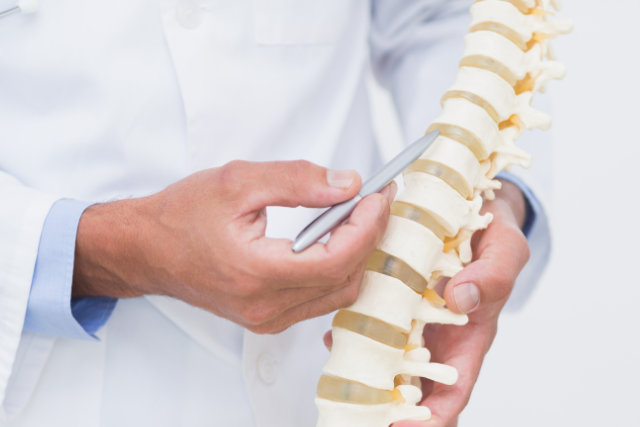Spine
Conservative Management: Many spinal conditions can be effectively managed with conservative, non-surgical treatments. These may include:
- Medications: Pain relievers, anti-inflammatory drugs, muscle relaxants, and nerve-pain medications may be prescribed to manage symptoms.
- Physical Therapy: Targeted exercises, stretches, and manual therapy techniques can help improve strength, flexibility, and posture, as well as alleviate pain and discomfort.
- Chiropractic Care: Spinal manipulation and adjustments performed by chiropractors can help realign the spine and relieve pressure on nerves.
- Acupuncture: This traditional Chinese medicine technique involves inserting thin needles into specific points on the body to alleviate pain and promote healing.
- Bracing or Supports: Orthotic devices such as braces, lumbar supports, or cervical collars may be used to provide stability and alleviate strain on the spine.
Minimally Invasive Procedures: For certain spinal conditions that do not respond to conservative treatments, minimally invasive procedures may be recommended. These procedures are performed using small incisions and specialized instruments, resulting in shorter recovery times and less tissue damage compared to traditional open surgery. Examples include:
- Epidural Steroid Injections: Steroids and numbing medications are injected into the epidural space around the spinal cord to reduce inflammation and relieve pain associated with conditions such as herniated discs or spinal stenosis.
- Facet Joint Injections: Medications are injected directly into the small joints of the spine to reduce inflammation and alleviate pain caused by arthritis or facet joint syndrome.
- Radiofrequency Ablation: Heat generated by radiofrequency energy is used to disable nerves that are causing pain, providing long-term relief for conditions such as chronic back pain or sciatica.


Surgical Intervention: In cases where conservative treatments and minimally invasive procedures fail to provide adequate relief or when the spinal condition is severe or progressive, surgery may be necessary. Common spinal surgeries include:
- Discectomy: Removal of a herniated or damaged disc to relieve pressure on spinal nerves.
- Laminectomy: Removal of part of the lamina (the bony arch of the vertebra) to relieve pressure on the spinal cord and nerves.
- Spinal Fusion: Joining two or more vertebrae together to stabilize the spine and reduce pain caused by instability or deformity.
- Vertebroplasty or Kyphoplasty: Injection of bone cement into fractured vertebrae to stabilize them and relieve pain caused by compression fractures.
Rehabilitation and Lifestyle Modifications: Regardless of the treatment approach, rehabilitation plays a crucial role in spinal care. Physical therapy, occupational therapy, and lifestyle modifications (such as weight management, ergonomic adjustments, and proper body mechanics) are essential for improving strength, flexibility, and overall spinal health.

